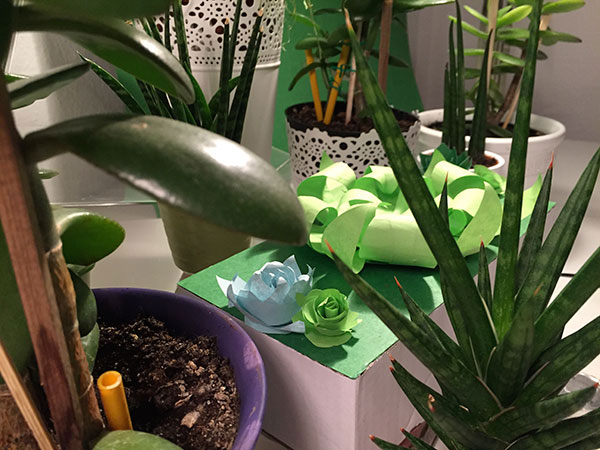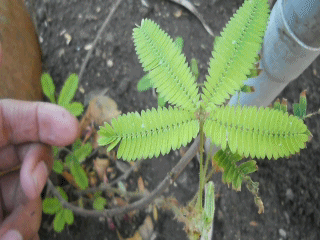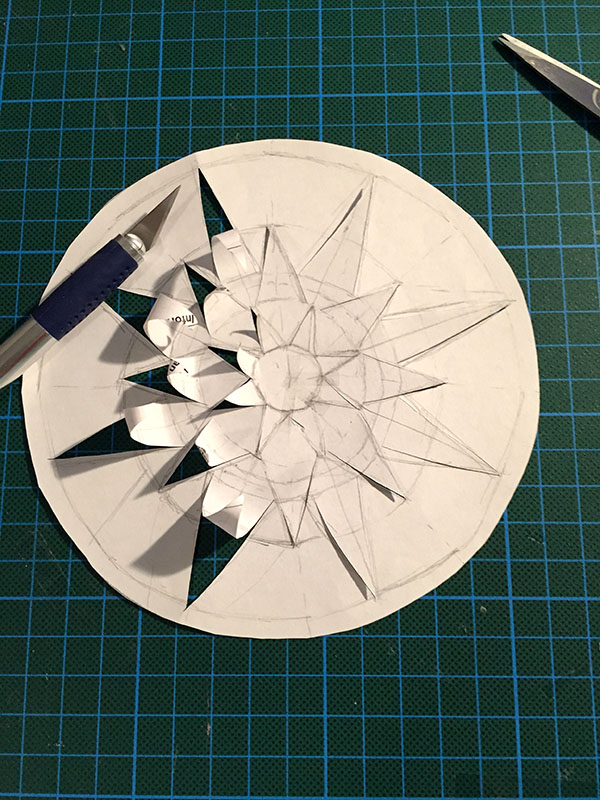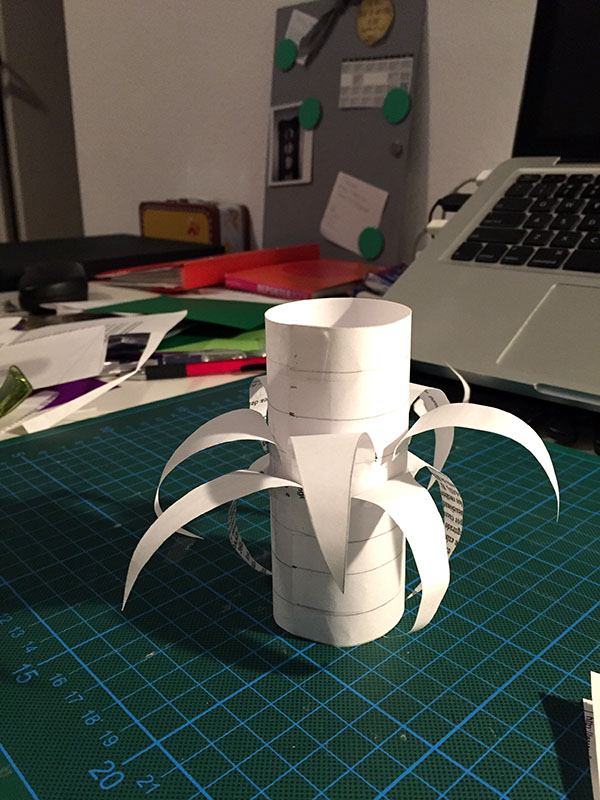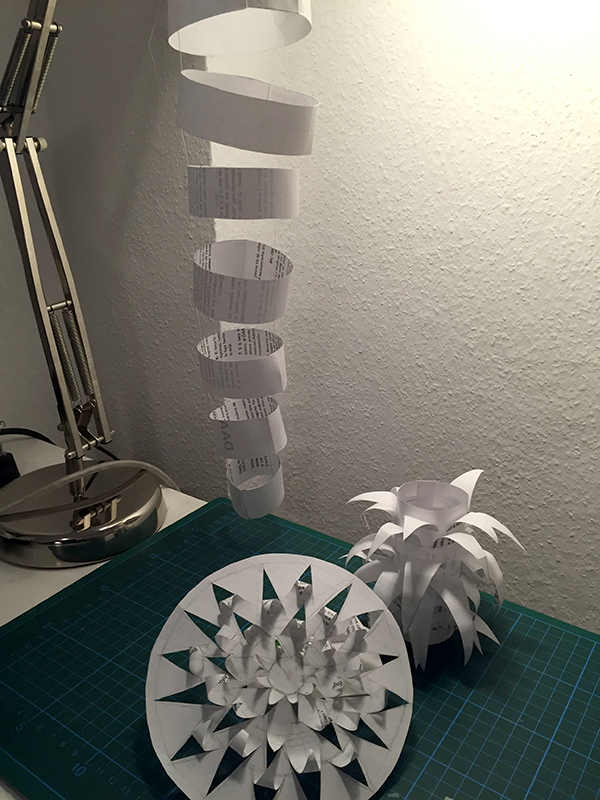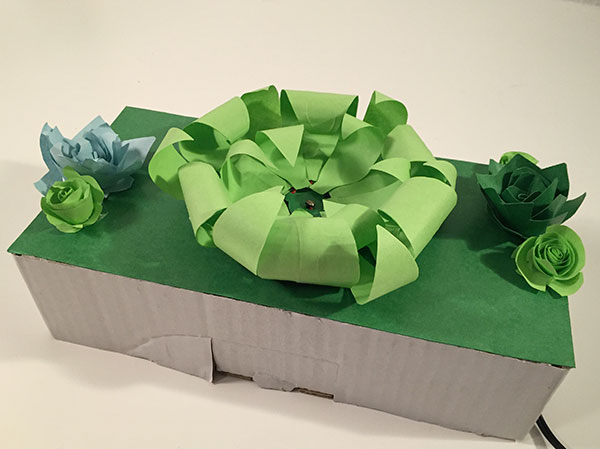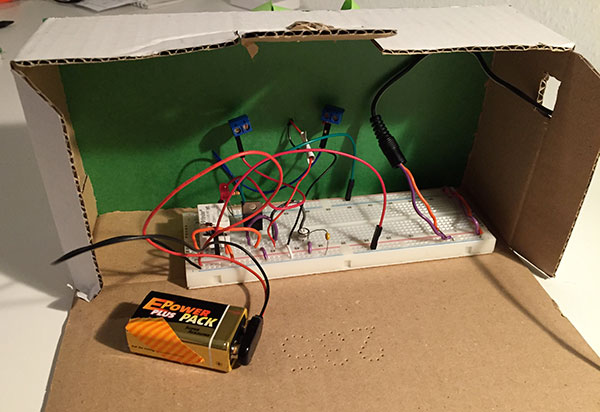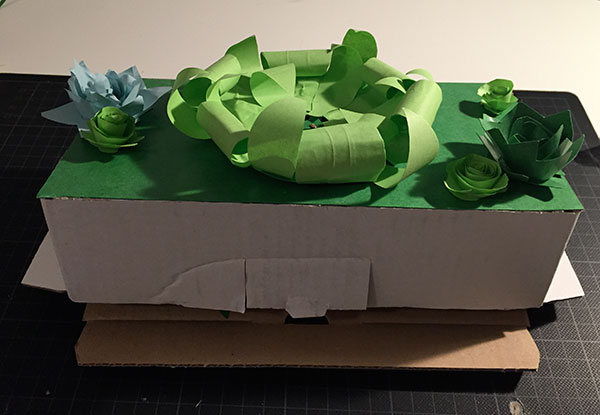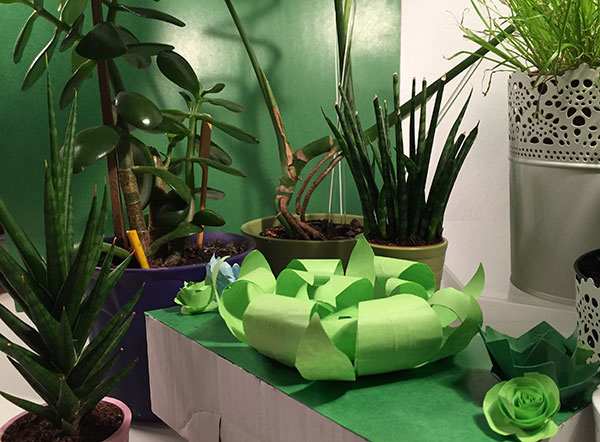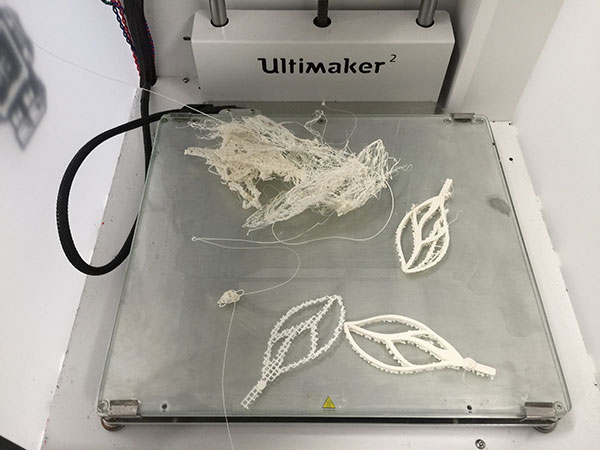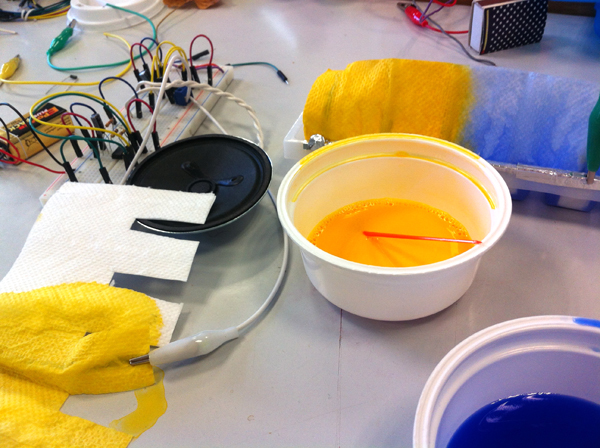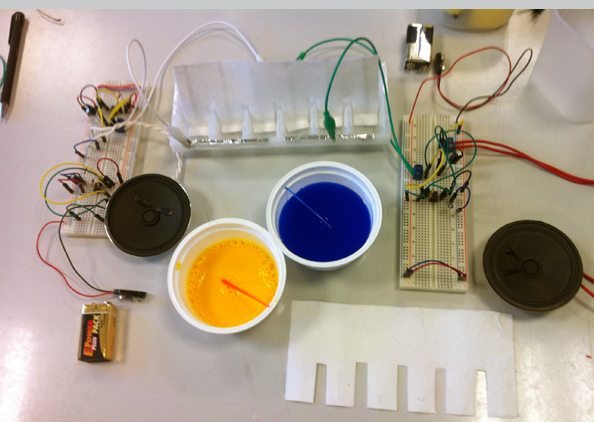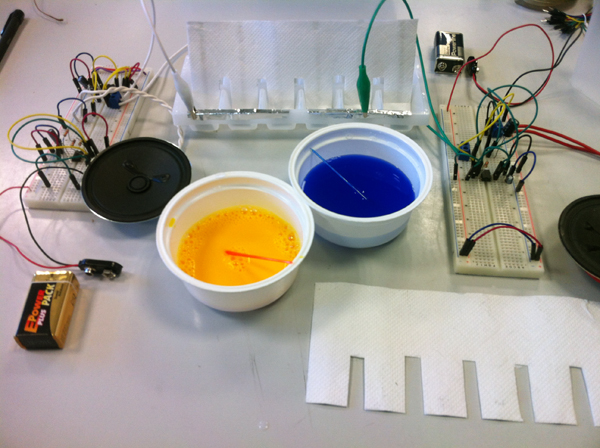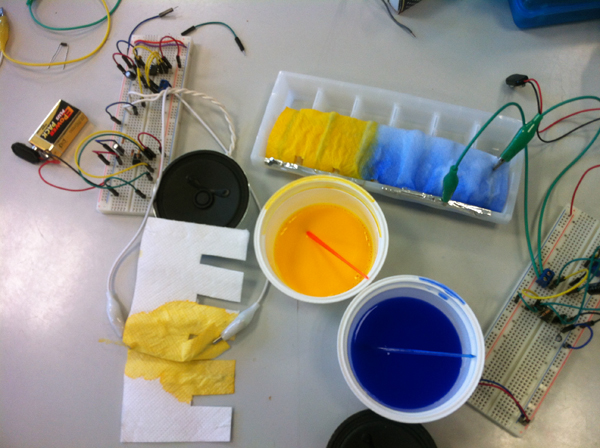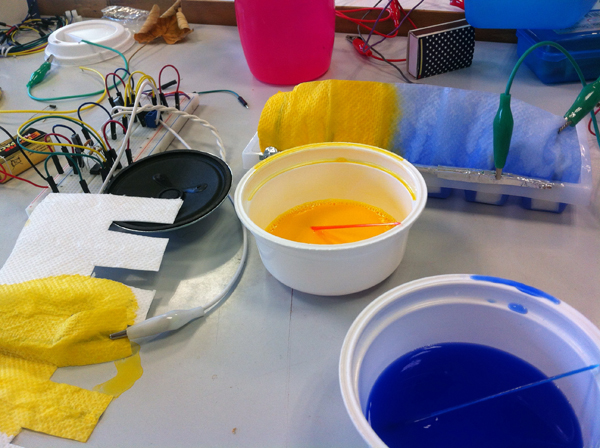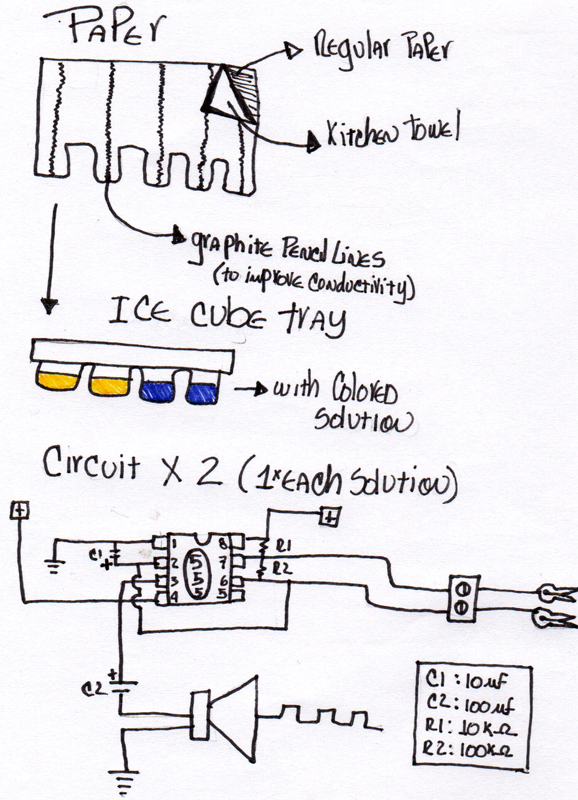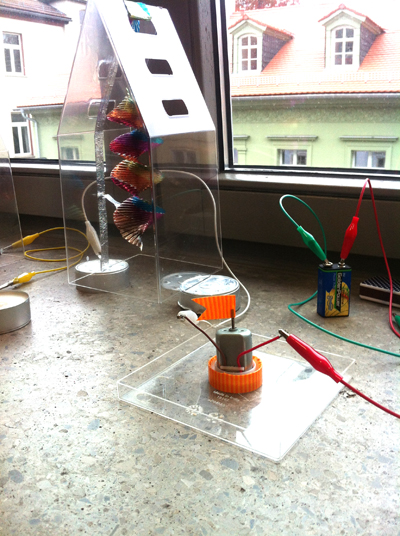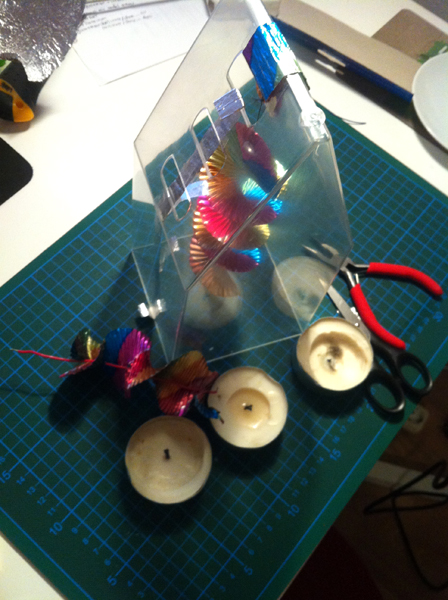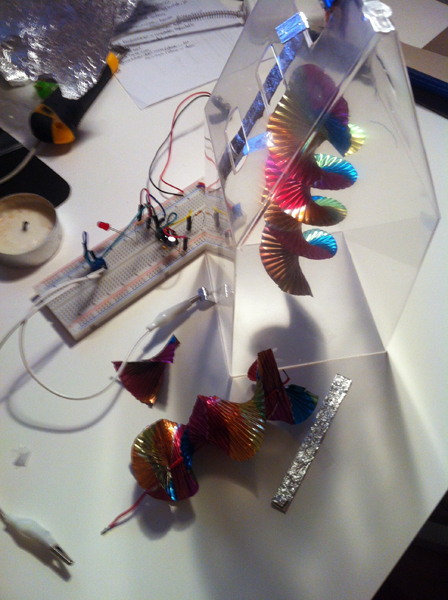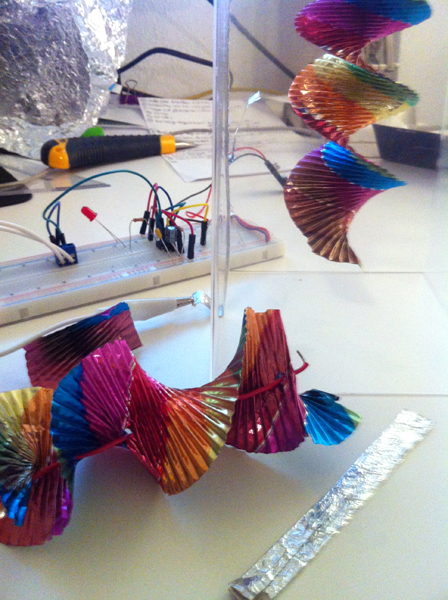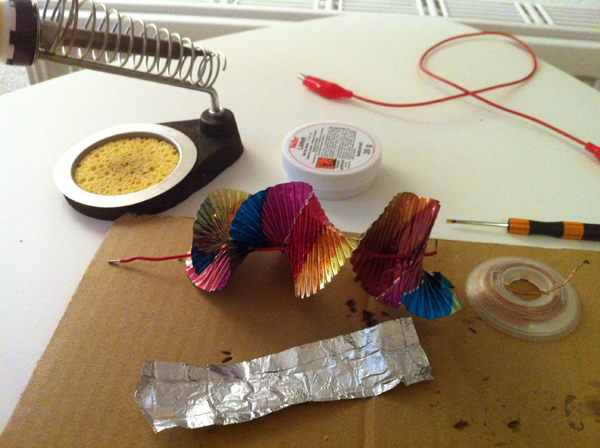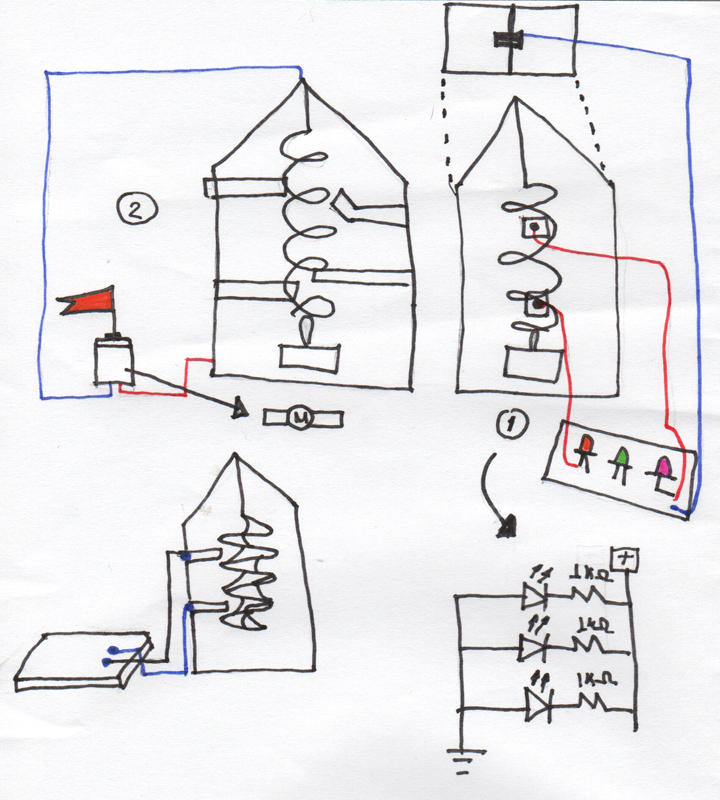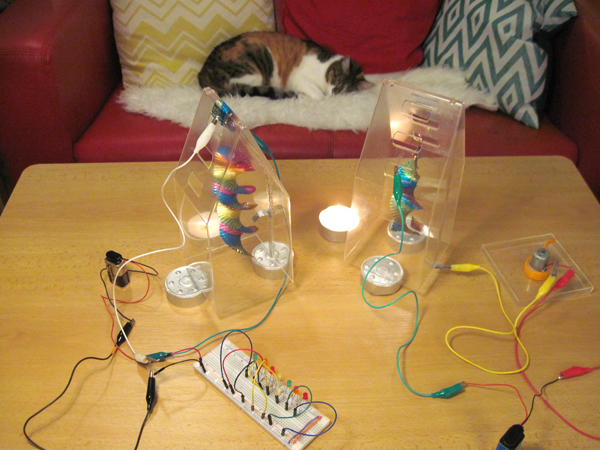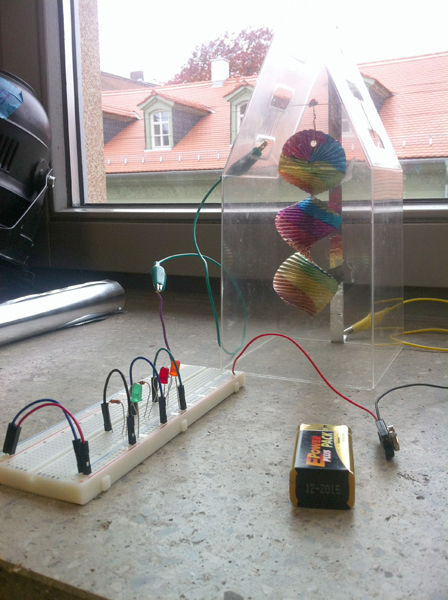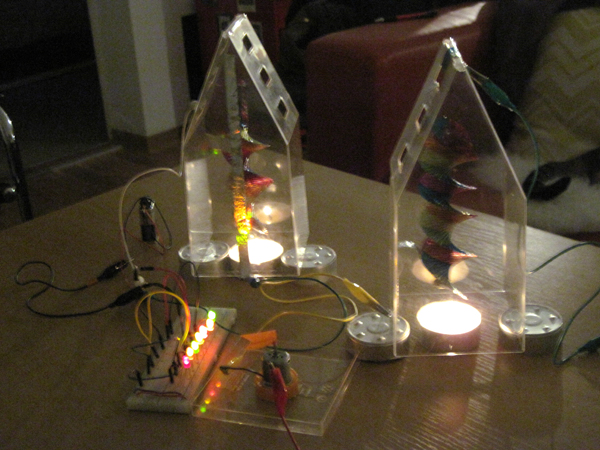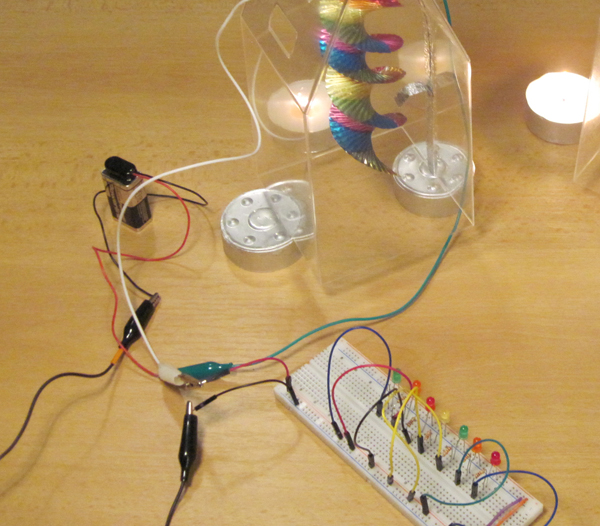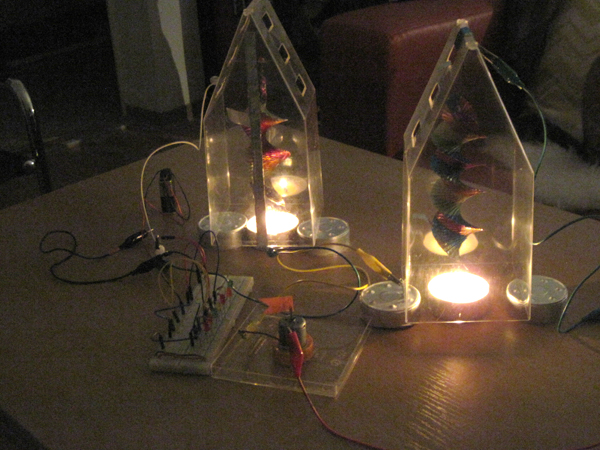| Line 133: | Line 133: | ||
3D Model file for the printing | 3D Model file for the printing | ||
[[File:f16. | [[File:f16.JPG]] | ||
Opps! Problems with the object design... | Opps! Problems with the object design... | ||
Revision as of 23:13, 13 March 2016
Assignments/Projects for GMU:The Conceptual Sensor - Winter Semester 2015.
By Vanessa Yepes Serna
FINAL PROJECT: ELECTRIC MIMOSA
I. Circuit Overview
Inspired by the smooth-organic movement of the Sleepy Plant (Mimosa pudica) this circuit wants to experiment with different methods of locomotion, testing the possibilities of the nickel - titanium wire alloy.
Mimosa movement
a. Circuit Diagram with Photocell
II. Circuit construction
Materials:
- Flexinol (nickel - titanium wire alloy)
- 555 timer
- Potentiometer 100k
- Capacitor 0.1 mf
- Potentiometer 100k
- Photocell
- Transistor TIP 120
- Diode 1n404
- Relay
- LED
- Resistor 1k Ohm
- 2 Batteries 9 volt.
Testing the wire video
See the embedded video below:
<videoflash>4onE5ArcOdc|980|500</videoflash>
If you can not see the video, please go to this link:
Testing shapes
Circuit 1 (movement detection with photocell)
Video Circuit 1 (movement detection with photocell)
Link
Plant and leafs construction
Cutting paper leafs
Installing Flexinol and wire inside the leafs
Assembling wire and leaves
Soldering the wire between the leafs
Assembling fixed leafs
III. FINAL INSTALLATION
Assembled Garden
The magic Inside the box
Inside of the Electric Garden
IV. FUTURE IMPROVEMENTS
1. Incorporate an Infrared sender and receiver instead of a Photocell in order to improve the reaction to “touch”
2. At the moment, I’m experimenting with 3D printing and a possible electronic object with this technique. These are photos of this process so far
3D Model file for the printing
Opps! Problems with the object design...
ASSIGNMENT 2 : THE EXPERIMENTAL RESISTANCE
I. Description
All the objects around us have its own amount of electric conductivity, some of then let the electricity runs wild and other just make it slow. This exercise is an attempt to control the flow of electric current, and show in a tangible way the electric current activity.
Using colored water with a dilution of different conductive materials like salt, soap and vinegar, this circuit makes different noises when the resistance of the piece of paper decreases due the amount of conductive solution in it. The result is a visual color mixing game that plays various sounds according with the ingredient diluted in the colored solution.
I. Photos
a. Before the colored solution
a. After color mixing
2. Circuit Diagram and Sketches
ASSIGNMENT 1 : THE IMPROBABLE SWITCH
I. Description
This exercise experiments with the different ways to close a circuit, any material could be a switch with the right construction with more visually interesting results than the black boxes in our daily electronic objects. In this case, a candle is used to warm the air around a metallic spiral and produce movement. When the spiral moves, it opens and closes the circuit, touching aluminum leafs installed inside of the small greenhouse. When the switch is on the little flag in the motor moves and the lights turn on.
2 Construction Photos
3. Circuit Diagram and Sketches
4. Circuit Photos
5. Video
You can not see the embedded video below:
If you can see the video, please go to this link: [1]
<videoflash>Qf4I3rnYsi8|980|500</videoflash>
If you can not see the video, please go to this link: [2]
